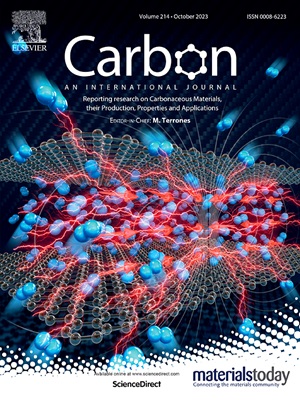Graphene-based multi-channel OOK communication with frequency-multiplexed switchable metasurface
IF 10.5
2区 材料科学
Q1 CHEMISTRY, PHYSICAL
引用次数: 0
Abstract
Programmable metasurfaces have recently attracted considerable interest for their versatile applications in areas such as beam steering, holography, and wireless communications, utilizing either phase or amplitude modulation. Despite this, programmable amplitude coding modulation has seen limited exploration, primarily due to the difficulties involved in achieving real-time dynamic amplitude control. Here, we propose a reprogrammable amplitude-coding metasurface utilizing the on–off keying (OOK) method combined with frequency modulation. To the best of our knowledge, this is the first study to simultaneously address both the metasurface design and the theoretical investigation of OOK simultaneously, considering all parameters present in the design, channel, and on–off ratio. The proposed metasurface comprises two graphene layers with separate biasing voltages. By controlling the chemical potential of each layer, we can independently modulate the amplitude in two states at two different frequencies through a field-programmable gate array (FPGA). This bias-driven control allows the device to operate actively and reconfigure its response in real-time. In addition, we employ an information encryption method using the substitution cipher method and transmit it at two amplitude levels at distinct frequencies to safeguard transmission information against eavesdropping. Simulation and numerical results convincingly demonstrate that the proposed reprogrammable metasurface facilitates secure communication in multi-channel data encryption, terahertz (THz) data storage, information processing, and THz communication.
基于石墨烯的多通道OOK通信,具有频率复用可切换的超表面
可编程超表面最近因其在波束控制、全息和无线通信等领域的广泛应用而引起了人们的极大兴趣,这些领域可以利用相位或幅度调制。尽管如此,可编程幅度编码调制的探索有限,主要是由于实现实时动态幅度控制所涉及的困难。在这里,我们提出了一种利用开关键控(OOK)方法结合调频的可重新编程的幅度编码超表面。据我们所知,这是第一个同时解决超表面设计和OOK理论研究的研究,考虑到设计中存在的所有参数,通道和开关比。所提出的超表面包括两个具有独立偏置电压的石墨烯层。通过控制每一层的化学势,我们可以通过现场可编程门阵列(FPGA)在两个不同频率下独立调制两种状态下的振幅。这种偏置驱动控制允许设备主动运行,并实时重新配置其响应。此外,我们采用了替代密码法的信息加密方法,并在不同频率的两个幅度级传输,以保证传输信息不被窃听。仿真和数值结果令人信服地表明,所提出的可重编程元表面可促进多通道数据加密、太赫兹(THz)数据存储、信息处理和太赫兹通信的安全通信。
本文章由计算机程序翻译,如有差异,请以英文原文为准。
求助全文
约1分钟内获得全文
求助全文
来源期刊

Carbon
工程技术-材料科学:综合
CiteScore
20.80
自引率
7.30%
发文量
0
审稿时长
23 days
期刊介绍:
The journal Carbon is an international multidisciplinary forum for communicating scientific advances in the field of carbon materials. It reports new findings related to the formation, structure, properties, behaviors, and technological applications of carbons. Carbons are a broad class of ordered or disordered solid phases composed primarily of elemental carbon, including but not limited to carbon black, carbon fibers and filaments, carbon nanotubes, diamond and diamond-like carbon, fullerenes, glassy carbon, graphite, graphene, graphene-oxide, porous carbons, pyrolytic carbon, and other sp2 and non-sp2 hybridized carbon systems. Carbon is the companion title to the open access journal Carbon Trends. Relevant application areas for carbon materials include biology and medicine, catalysis, electronic, optoelectronic, spintronic, high-frequency, and photonic devices, energy storage and conversion systems, environmental applications and water treatment, smart materials and systems, and structural and thermal applications.
 求助内容:
求助内容: 应助结果提醒方式:
应助结果提醒方式:


